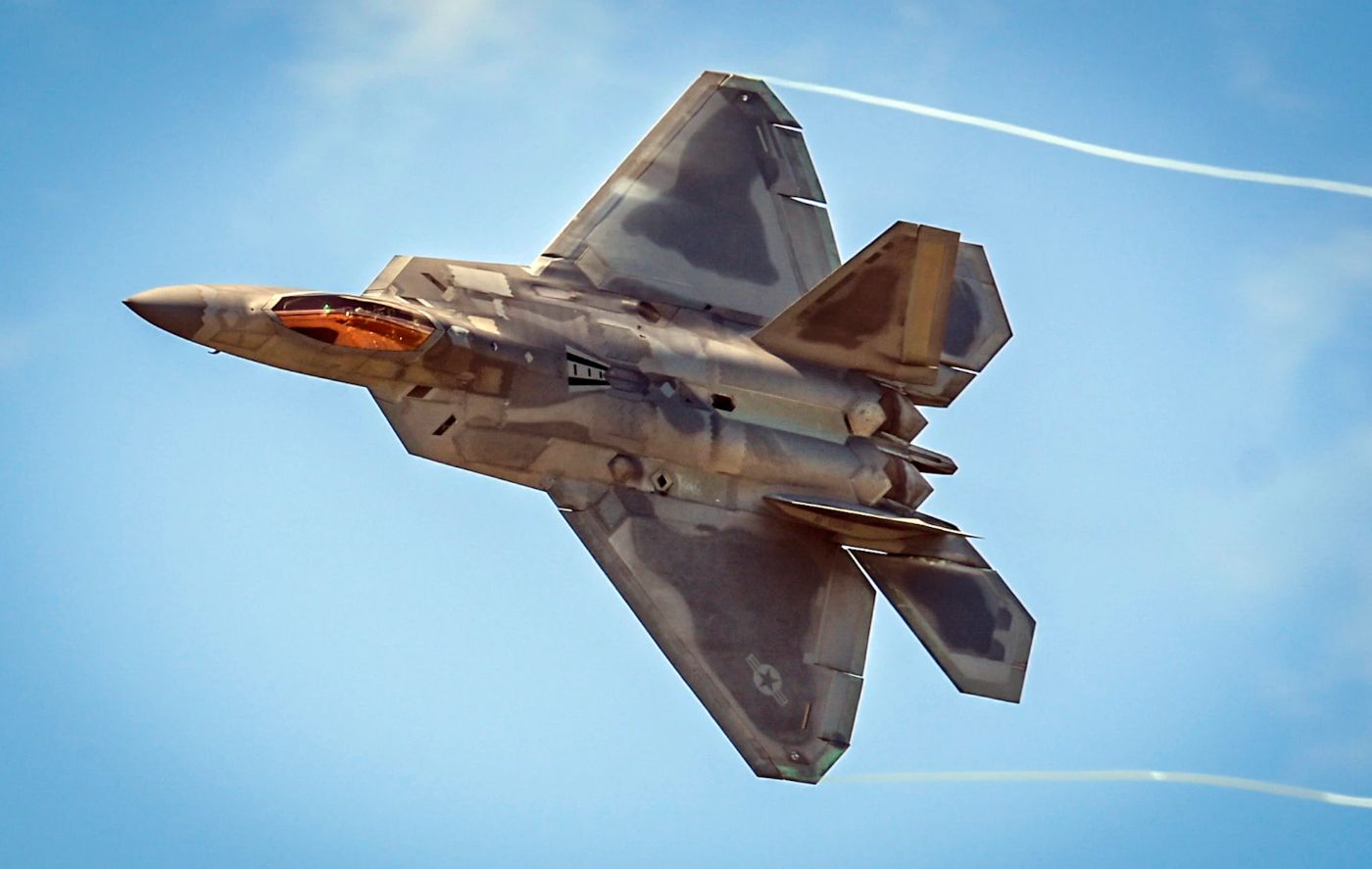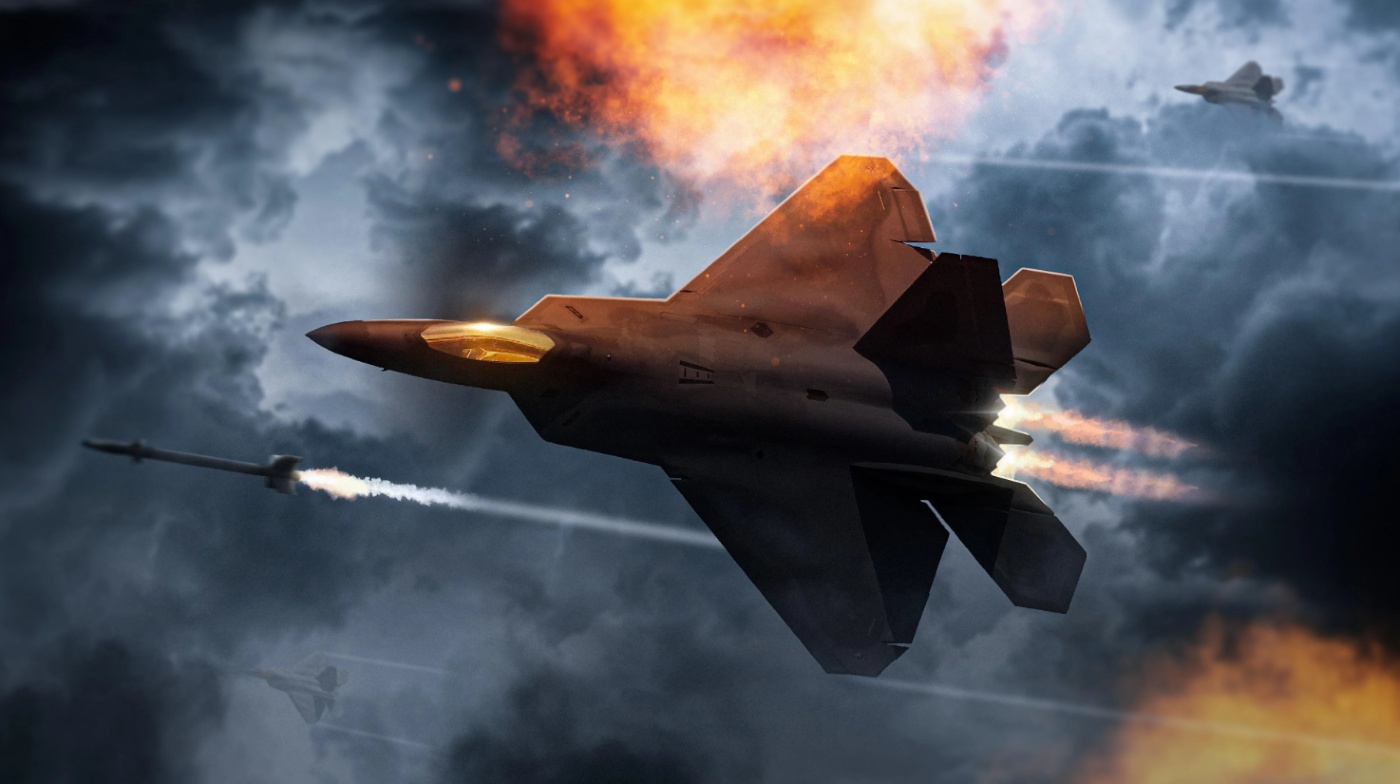After months of internal bickering, the US Congress blocked the US Air Force’s request to scrap the 32 old Block 20 F-22 Raptors. A top official noted that the newer and more combat-capable versions of the stealth aircraft were the “highest priority” in a near-term conflict.
Speaking at the McAleese Defense Programs conference, Air Force Acquisition Chief Andrew Hunter referred to the F-22 as the “foundation” of the service’s airpower, noting that the aircraft will play a crucial role until its replacement, the Next Generation Air Dominance (NGAD) platform enters service.
“F-22 is a critical capability,” Hunter said. “So what’s my highest priority in the near term for that great power competition? I’d probably put F-22 at the top.” The assertion comes at a time when the US Air Force (USAF) has been showing reluctance in upgrading the near-redundant Block 20 Raptors.
Last year, the US Air Force requested to retire 32 Block 20 F-22s as part of its fiscal 2024 budget so that the money spent on their upkeep could be diverted to the NGAD sixth-generation platform, which is currently under development and will eventually replace the Raptor.
The Block 20 F-22 jets belong to the early production models known as Block 20 jets, primarily designed for training purposes and are not combat-capable. Operating costs for the aircraft are US$485 million a year, or about US$15 million per jet.

Despite these arguments presented by the service in favor of junking the 32 Raptors, Congress stonewalled the proposal to send these Raptors to be sent to the boneyard.
House and Senate authorizers in the FY23 National Defense Authorization Act, which was published in December 2023, forbade the service from divesting the F-22 Block 20 Raptors.
Hunter’s latest remarks probably provide a sneak peek at what the USAF would demand in its future FY25 budget request about the Raptor. Hunter further said that Air Force officials would talk to Congress about “some” F-22s that aren’t combat-ready, and it seemed as though money might be better spent updating other Raptors in the fleet.
Gen. David Allvin, the Chief of Staff of the Air Force, stated later in the day that the service’s present priority was to maintain some F-22s “viable and relevant against the threat until Next Generation Air Dominance” arrived.
He further said: “We’re looking to be able to take those that are the most combat-capable, keep them in the fight, and then leverage some of the resources for those that are going to be cost prohibitive and time prohibitive” to upgrade.
The F-22 was introduced into service in the early 2000s. Since then, upgrades have been relatively limited compared to the numerous upgrades received by older fourth-generation aircraft like the F-15 and F-16. However, as the threat of a potential conflict with China looms large, the service wants to put its money on platforms that would augment its combat power.
Block 20 Is Too Expensive to Upgrade
In its budget request for fiscal year 2024, the Air Force suggested decommissioning the training F-22s since they no longer accurately represented the frontline Block 35, the fighter’s combat-coded and configured variant.
They are solely used for training, and according to service authorities, the differences between them and the frontline version are so great that they result in “negative training,” which forces trainees to unlearn habits they have picked up in the older aircraft.
Before the F-22 retires, Air Force Secretary Frank Kendall estimated that it would cost up to $50 million per aircraft to upgrade the Block 20s to the Block 35 design and much more to operate and maintain them with the rest of the fleet.
Lt. Gen. Richard Moore, deputy chief of staff for plans and programs for the Air Force, had said earlier that “they (the Raptors) will never be a part of the combat force. They don’t have the most modern communications. They don’t shoot the most modern weapons. They don’t have the most modern electronic warfare capabilities.”
Explaining why the service was asking for its divestment in the first place, Moore noted: “There’s a lot of thought that it’s too early to be walking away from fifth-gen aircraft, and the Block 20s certainly are. But they are not the Block 30/35 aircraft. They are not the fifth-gen Air Force that we’re going to carry into combat, and it was a little bit of a difficult choice, but a choice that we made nonetheless because we believe it’s imperative to get to the future.”
The critical distinction between the two variants lies in their varying capabilities. The Block 30/35 aircraft, for instance, boasts a host of enhancements absent in their Block 20 counterparts.
An important improvement is the APG-77v1 radar, which is only available on Block 30/35 aircraft. This cutting-edge radar system provides improved air-to-ground capabilities, such as synthetic aperture mapping and moving target indicators, along with an expanded 400-km narrow-beam search range.

In terms of weapons, Block 30/35 aircraft are compatible with vital armaments, including air-launched decoys, the Small Diameter Bomb, and the most recent AIM-9X and AIM-120D air-to-air missiles. Another benefit only available to Block 30/35 aircraft is the integration of Automatic Ground Collision Avoidance Software (AGCAS), which significantly lowers crash hazards during operations.
The F-22 Raptor’s design started in the 1980s, and the aircraft had its first flight in 1997, even though it went into service in 2005. This fifth-generation stealth aircraft is more than thirty years old. Given the advancements in technology since the final F-22 left the production line, it makes sense that the aircraft will require updates to continue operating.
Needless to say, upgrading the jets to Block 30/35 would require more dollars than the service would be willing to spend, as the acquisition chief hinted, than adding more teeth to the newer, more advanced, and combat-capable variants of the aircraft.
- Contact the author at sakshi.tiwari9555 (at) gmail.com
- Follow EurAsian Times on Google News




